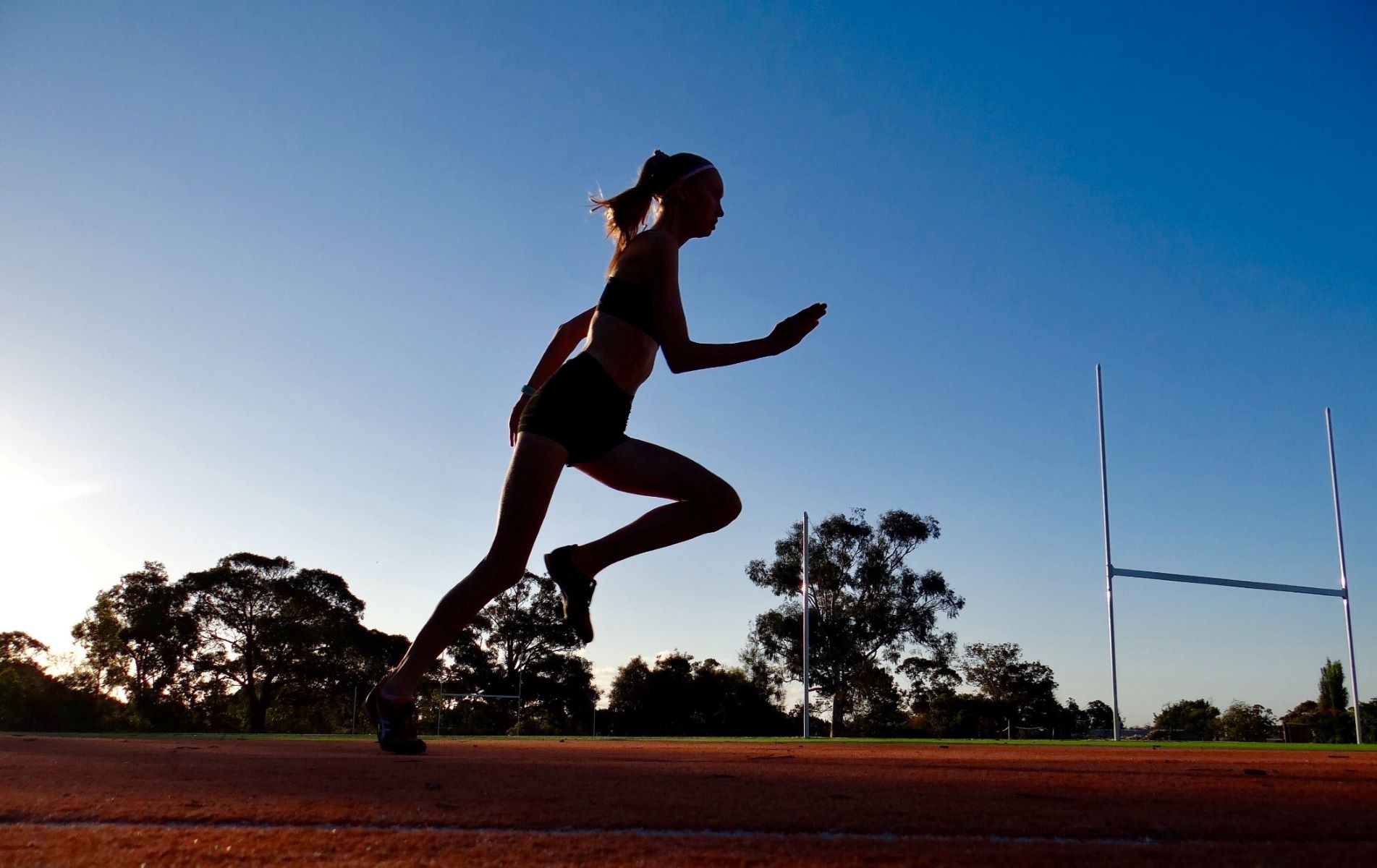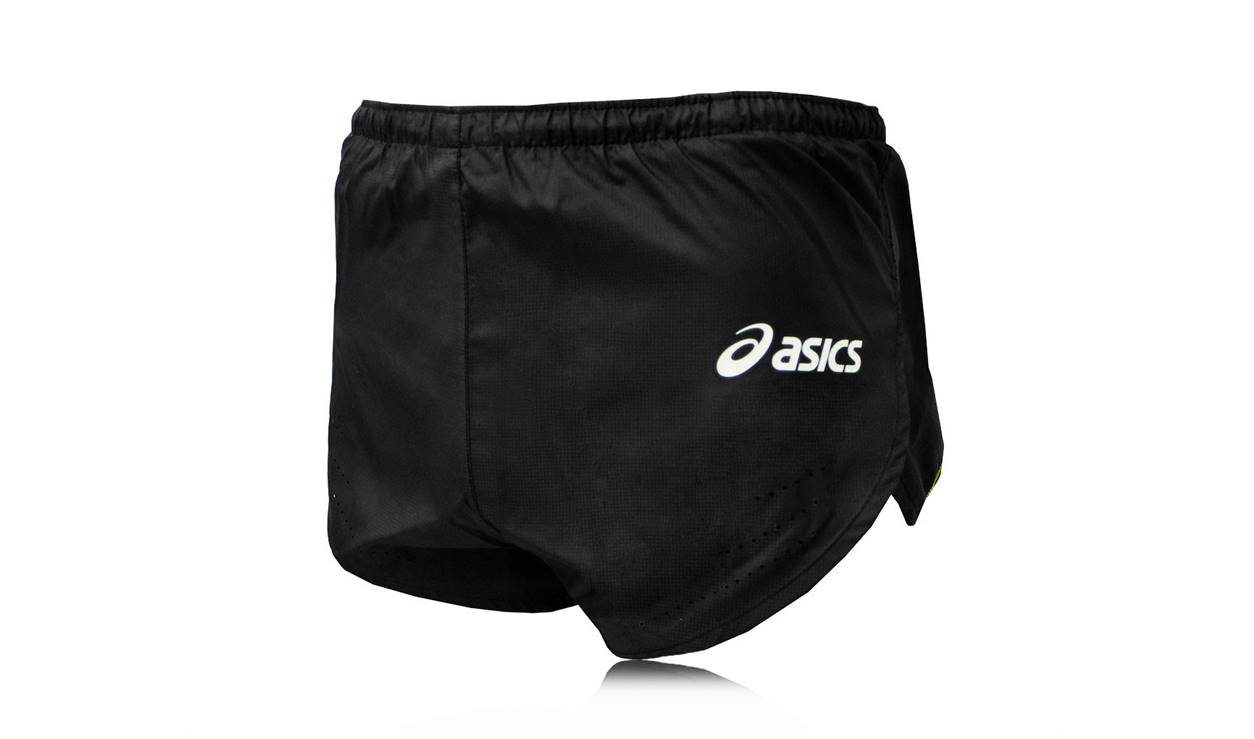Home>Misc>Featured>What Does Optimal Athletic Performance Require


Featured
What Does Optimal Athletic Performance Require
Modified: January 2, 2024
Discover what it takes to achieve optimal athletic performance. Learn the essential elements that will help you excel in your sport. Featured article.
Introduction
Achieving optimal athletic performance is the ultimate goal for athletes and sports enthusiasts alike. Whether you’re a professional athlete or someone who enjoys recreational sports, reaching your full potential requires a combination of physical fitness, proper nutrition, hydration, adequate sleep and rest, mental and emotional well-being, injury prevention and rehabilitation, training and skill development, and genetics and natural abilities. Each of these factors plays a crucial role in enhancing athletic performance and can make a significant difference in your overall success.
In this article, we will explore the various components that contribute to optimal athletic performance and how they interconnect to create a well-rounded athlete. From the physical demands of the sport to the mental fortitude required, we will delve into the key elements that can help athletes excel in their respective disciplines.
It is important to note that optimal athletic performance is not achieved overnight. It is a continuous journey that requires dedication, discipline, and hard work. By understanding the significance of each factor and incorporating them into your training regimen, you can maximize your potential and elevate your performance to new heights.
Now, let’s dive into the different aspects that contribute to optimal athletic performance and explore how they can be optimized to improve both physical and mental abilities.
Physical Fitness
Physical fitness forms the foundation of optimal athletic performance. It encompasses several key components, including cardiovascular endurance, muscular strength and endurance, flexibility, and body composition. A well-rounded athlete should strive to improve each aspect of physical fitness to enhance overall performance.
Cardiovascular endurance, also known as aerobic fitness, is the ability of the heart, lungs, and blood vessels to deliver oxygen-rich blood to working muscles during prolonged exercise. It is crucial for athletes who engage in endurance sports such as running, cycling, and swimming. Regular cardio exercises, such as jogging, interval training, and cycling, can improve cardiovascular endurance and enhance overall stamina.
Muscular strength and endurance are essential for athletes in various sports. Strength refers to the amount of force a muscle can exert, while endurance is the ability to sustain that force over a period of time. Resistance training, using weights or bodyweight exercises, helps to build muscle strength, while high-repetition exercises improve muscular endurance. Athletes should focus on specific muscle groups that are utilized in their respective sports to enhance performance.
Flexibility plays a crucial role in preventing injuries and optimizing athletic performance. A flexible body allows for a wider range of motion, which is beneficial in activities such as gymnastics, martial arts, and dance. Dynamic stretching exercises, such as lunges, leg swings, and arm circles, help to improve flexibility and prepare the muscles for movement.
Body composition refers to the proportion of fat, muscle, and bone in the body. Achieving an optimal body composition can enhance athletic performance by improving power-to-weight ratio, agility, and speed. A balanced diet, regular exercise, and proper recovery are key elements in maintaining a healthy body composition.
Overall, physical fitness is the cornerstone of athletic performance. By focusing on cardiovascular endurance, muscular strength and endurance, flexibility, and body composition, athletes can improve their physical abilities and excel in their chosen sports.
Proper Nutrition
Proper nutrition plays a vital role in optimizing athletic performance. A well-balanced diet provides the necessary fuel and nutrients to support physical activity, aid in recovery, and enhance overall performance. Whether you’re a professional athlete or a recreational sports enthusiast, understanding the importance of nutrition can significantly impact your athletic endeavors.
Carbohydrates are the body’s primary source of energy, especially during intense physical activities. Athletes should consume complex carbohydrates like whole grains, fruits, and vegetables to provide a steady supply of energy. Additionally, carbohydrates help replenish glycogen stores in the muscles, promoting faster recovery and reducing fatigue.
Protein is essential for muscle repair, growth, and recovery. Athletes should aim to consume high-quality protein sources such as lean meats, fish, eggs, dairy products, and plant-based proteins like beans and legumes. Adequate protein intake is crucial for maintaining muscle mass and supporting the body’s overall repair processes.
Fat is another important macronutrient that provides a concentrated source of energy. Healthy fats, such as those found in avocados, nuts, seeds, and olive oil, are beneficial for athletes. They aid in nutrient absorption, support hormone production, and offer long-lasting energy for endurance activities.
Vitamins and minerals are essential for various physiological functions in the body. Adequate intake of vitamins and minerals, obtained through a diverse and balanced diet, supports overall health, immune function, and performance optimization. It is important for athletes to ensure they are meeting their nutrient needs through a variety of whole foods.
Hydration is also a critical aspect of proper nutrition for athletes. Water is essential for regulating body temperature, transporting nutrients, and removing waste products. Athletes should drink fluids before, during, and after exercise to maintain hydration levels. Electrolytes, such as sodium and potassium, are also important for replenishing lost minerals during intense physical activity.
Planning and timing meals around training sessions and competitions is essential to optimize performance. Pre-workout meals should provide a balance of carbohydrates and protein for energy and muscle support. Post-workout meals should focus on replenishing glycogen stores and aiding in muscle recovery.
Overall, proper nutrition is a crucial factor in maximizing athletic performance. It provides the necessary fuel, nutrients, and hydration to support physical activity, aid in recovery, and optimize overall performance. By prioritizing a well-balanced diet, athletes can enhance their energy levels, endurance, and overall athletic potential.
Hydration
Hydration plays a vital role in optimizing athletic performance. Proper hydration not only maintains overall health but also ensures optimal physical and cognitive function during exercise. Dehydration can impair performance, lead to muscle cramps, hinder recovery, and increase the risk of heat-related illnesses. Therefore, athletes must prioritize hydration before, during, and after physical activity.
Water is the most crucial component of staying hydrated. Before exercise, it is important to ensure that you are adequately hydrated by drinking water in the hours leading up to the activity. During exercise, it is necessary to replace fluids lost through sweat to maintain optimal hydration levels. The exact amount of fluid needed varies based on factors such as the intensity, duration, and environmental conditions of the activity, as well as individual sweat rates. To determine your sweat rate, weigh yourself before and after exercise, and aim to replace each pound lost with approximately 16-24 ounces of fluid.
In addition to water, sports drinks can be beneficial during prolonged, intense exercise. These drinks contain electrolytes such as sodium and potassium, which are lost through sweat and help maintain fluid balance in the body. They also provide a source of carbohydrates for sustained energy during longer workouts. However, it’s important to read labels and choose drinks that are not overly sugary or high in calories, as excessive consumption of sugary drinks can lead to digestive issues and energy crashes.
It is also worth noting that thirst is not always an accurate indicator of hydration status. By the time you feel thirsty, you may already be mildly dehydrated. Therefore, it is important to drink fluids regularly throughout the day and during exercise, rather than relying solely on thirst as a signal.
Environmental factors also influence hydration needs. Exercise in hot and humid conditions increases the rate of sweat production, leading to increased fluid loss. In these situations, it is necessary to increase fluid intake and consider using cooling methods such as misting, ice towels, or wearing light clothing to regulate body temperature.
Proper hydration extends beyond exercise. Athletes should maintain a consistent habit of drinking water throughout the day to ensure adequate hydration levels before any physical activity. Additionally, hydrating after exercise is crucial for recovery. Consuming fluids and electrolytes helps restore fluid balance, replenish glycogen stores, and support muscle repair and growth.
Remember, every athlete is unique, and individual hydration needs may vary. It is essential to listen to your body, monitor urine color (pale yellow is an indicator of adequate hydration), and adjust fluid intake accordingly. By prioritizing hydration, athletes can optimize performance, enhance endurance, and reduce the risk of dehydration-related issues.
Sleep and Rest
Sleep and rest are often overlooked but crucial components of optimizing athletic performance. The quality and quantity of sleep directly impact an athlete’s physical and cognitive abilities, recovery process, and overall well-being. Adequate sleep and rest are essential for optimal performance, injury prevention, and long-term athletic success.
During sleep, the body undergoes various restorative processes. It is a time when muscles repair and grow, hormones are regulated, and the immune system is strengthened. Inadequate sleep can impair these processes, leading to decreased muscle recovery, increased risk of injuries, compromised immune function, and reduced mental alertness.
The recommended sleep duration for adults is typically between 7-9 hours per night. However, athletes may require additional sleep due to the physical demands placed on their bodies. Individual sleep needs vary, so it is important for athletes to prioritize enough sleep to ensure proper recovery and maximize their athletic potential.
In addition to sleep duration, sleep quality is also crucial. Athletes should strive for restful and uninterrupted sleep. Creating a sleep-friendly environment by minimizing noise, light, and distractions can help improve sleep quality. Establishing a bedtime routine, such as avoiding electronic devices before bed and engaging in relaxation techniques, can also promote better sleep.
Rest and recovery also extend beyond sleep. Incorporating rest days into the training schedule is essential for allowing the body to recover from intense physical activity. Rest days give the muscles time to repair and adapt, reducing the risk of overuse injuries and improving overall performance. Active recovery, such as low-intensity exercises like yoga or light stretching, can also aid in muscle recovery.
Additionally, mental and emotional rest is vital for athletes. High-performance sports can be mentally and emotionally taxing, and restorative techniques such as mindfulness meditation, deep breathing exercises, and engaging in hobbies outside of sports can help alleviate stress, improve focus, and promote overall well-being.
It is important for athletes and coaches to prioritize sleep and rest as an integral part of the training program. Balancing the physical demands of training with sufficient sleep and rest allows the body to recover, adapt, and perform at its best. Athletes who prioritize sleep and rest are more likely to experience improved athletic performance, reduced risk of injuries, and greater longevity in their athletic careers.
Mental and Emotional Well-being
Mental and emotional well-being are essential factors in optimizing athletic performance. Sports can be physically demanding, but the mental and emotional aspects of the game are equally important. A positive mindset, emotional resilience, and effective stress management techniques can significantly impact an athlete’s performance, overall well-being, and long-term success.
One key aspect of mental and emotional well-being is maintaining a positive mindset. Believing in one’s abilities, setting achievable goals, and cultivating self-confidence are crucial for optimal performance. Positive self-talk, visualization techniques, and mindfulness practices can help athletes stay focused and resilient during training and competitions. Surrounding oneself with a supportive network of coaches, teammates, and mentors also contributes to a positive mindset.
Stress management is another vital component of mental and emotional well-being. Sports often come with intense pressure and high-stress situations. Learning effective stress management techniques, such as deep breathing exercises, meditation, and time management strategies, can help athletes stay calm, focused, and in control of their emotions. Seeking guidance from sports psychologists or mental performance coaches can also be beneficial in developing effective coping strategies.
Maintaining a healthy work-life balance is crucial for an athlete’s mental and emotional well-being. It is important to have interests and pursuits outside of sports to provide a sense of fulfillment and perspective. Engaging in hobbies, spending time with loved ones, and taking regular breaks from training can help prevent burnout and improve overall well-being.
Developing emotional resilience is key in dealing with setbacks and challenges. Sports are filled with ups and downs, and athletes need to develop the ability to bounce back from failures and setbacks. Building resilience involves embracing failure as a learning opportunity, developing problem-solving skills, and cultivating a growth mindset. Seeking support and guidance from coaches, mentors, or support groups can also be helpful in navigating challenging times.
Finally, mental and emotional well-being can be enhanced through self-care practices. Prioritizing sleep, proper nutrition, and regular exercise contributes to overall well-being. Engaging in activities that promote relaxation and stress relief, such as taking walks in nature, listening to music, or practicing hobbies, can also support mental and emotional health.
Athletes who prioritize their mental and emotional well-being alongside their physical training are more likely to experience enhanced performance, improved resilience, and increased enjoyment in their sport. By taking proactive measures to foster a positive mindset, manage stress effectively, and prioritize self-care, athletes can optimize their mental and emotional well-being, leading to greater success on and off the field.
Injury Prevention and Rehabilitation
Injury prevention and rehabilitation are critical components of maintaining optimal athletic performance. Sports activities can put significant strain on the body, increasing the risk of injuries that can hinder performance and sideline athletes for extended periods. By prioritizing injury prevention strategies and implementing effective rehabilitation protocols, athletes can reduce the risk of injuries and facilitate a faster and more successful recovery.
One key aspect of injury prevention is proper warm-up and cool-down routines. Engaging in dynamic stretching, mobility exercises, and gradual intensity buildup before training or competing can help prepare the muscles and joints for physical activity, reducing the risk of strains, sprains, and other injuries. Post-activity, a cool-down routine involving static stretching and foam rolling can aid in muscle recovery and prevent muscle tightness.
Strength and conditioning exercises are also crucial in preventing injuries. Building strength and improving stability in muscles and joints can help athletes withstand the physical demands of their sport. Incorporating exercises targeting specific muscle groups involved in the sport and focusing on proper form and technique can significantly reduce the risk of injuries and enhance overall performance.
Proper technique and form are essential in injury prevention. Coaches and trainers should provide athletes with guidance on correct body mechanics and movement patterns specific to their sport. Regular feedback and practice sessions can help athletes refine their technique, reducing the risk of overuse injuries and unnecessary strain on the body.
In the unfortunate event of an injury, effective rehabilitation is crucial for a successful recovery. Working with healthcare professionals such as sports medicine physicians, physical therapists, and athletic trainers is essential to facilitate the healing process and regain optimal function. The rehabilitation plan may include exercises to restore strength, flexibility, and range of motion, as well as modalities such as ice, heat, or electrical stimulation to manage pain and promote healing.
Gradual return to sport protocols are necessary after recovering from an injury to minimize the risk of re-injury. Incrementally increasing the intensity and duration of training, under the guidance of healthcare professionals, allows the body to adapt and regain its pre-injury condition. Following a structured rehabilitation plan and listening to the body’s cues are crucial during this phase.
Preventive measures, such as wearing appropriate protective gear, ensuring proper nutrition, staying hydrated, and maintaining overall fitness, are also important in reducing the risk of injuries. Athletes should also be mindful of fatigue and overtraining, as these can increase the susceptibility to injuries.
By focusing on injury prevention and implementing effective rehabilitation protocols, athletes can minimize the risk of injuries, maintain optimal physical condition, and ultimately enhance athletic performance.
Training and Skill Development
Training and skill development are key components in achieving optimal athletic performance. A well-designed training program tailored to the specific requirements of the sport can help athletes improve their strength, endurance, agility, and overall performance. Additionally, skill development plays a crucial role in mastering the techniques and tactics necessary to excel in the sport.
The foundation of effective training lies in setting clear goals. Athletes should outline their short-term and long-term objectives and work with coaches and trainers to develop a training plan that aligns with these goals. Whether it’s improving speed, increasing power, or enhancing technique, each training session should be purposeful and structured.
A comprehensive training program should include a balance of cardiovascular endurance exercises, strength training, agility and speed drills, and sport-specific skill development. Cardiovascular training improves overall endurance and stamina, while strength training enhances muscle strength and power for explosive movements. Agility and speed drills improve quickness and reaction time, while sport-specific skill development focuses on mastering the techniques specific to the sport.
Periodization is essential for appropriate training progression and to prevent overtraining. Dividing the training program into specific periods or phases, such as base training, build-up phase, and peak performance phase, allows for varying intensity, volume, and recovery time. Periodization also helps to prevent plateaus and optimize performance during competitions.
Recovery is an integral part of the training process. Adequate rest and recovery periods allow the body to adapt and rebuild, reducing the risk of overuse injuries and fatigue. Incorporating rest days, proper nutrition, and sleep into the training program are essential for maximizing the benefits of training and promoting optimal performance.
Technical and tactical skill development is invaluable in achieving success in any sport. Athletes should focus on mastering fundamental skills such as passing, shooting, serving, or tackling and then progress to more advanced techniques. Regular practice and repetition, combined with feedback from coaches and trainers, help refine these skills and promote consistency and precision in performance.
In addition to physical training, mental skills training is vital for athletes. Setting goals, managing stress, maintaining focus, and building mental resilience are essential for high-performance athletes. Techniques such as visualization, positive self-talk, and mental rehearsal can help athletes develop mental toughness and enhance their performance.
Continuous evaluation and adjustment of the training program based on performance feedback and assessment is crucial. Regular assessments, such as fitness testing and video analysis, can provide insights into areas that need improvement and guide the modification of the training plan.
Ultimately, a well-rounded and structured training program, coupled with dedicated skill development, is paramount in achieving optimal athletic performance. By focusing on setting goals, incorporating periodization, prioritizing recovery, and enhancing both physical and mental skills, athletes can maximize their potential and excel in their respective sports.
Genetics and Natural Abilities
Genetics and natural abilities play a significant role in athletic performance. Each individual is born with a unique genetic makeup that contributes to their physical attributes, such as muscle fiber type, body composition, and aerobic capacity. While genetics provide a foundation, it is important to note that hard work, dedication, and proper training can help athletes maximize their potential and overcome any genetic limitations.
One genetic factor that influences athletic performance is muscle fiber type. There are three main types of muscle fibers: type I, type IIa, and type IIx. Type I fibers are slow-twitch and are more resistant to fatigue, making them beneficial for endurance activities. Type IIa fibers are fast-twitch and have a balance of endurance and power, while type IIx fibers are fast-twitch and provide explosive power but fatigue quickly. Genetic predisposition to a certain muscle fiber type can affect an athlete’s performance in specific sports.
Body composition, which refers to the ratio of lean muscle mass to body fat, is another genetic factor that can impact performance. Some individuals may have a natural advantage in building muscle or maintaining lower body fat levels, which can enhance speed, power, and agility. However, it is important to note that body composition can be influenced and improved through proper nutrition and training, allowing athletes to optimize their performance regardless of their genetic predispositions.
Aerobic capacity, or the ability of the body to utilize oxygen during exercise, is influenced by genetic factors such as lung size, heart size, and efficiency of oxygen transport. Individuals with a higher aerobic capacity tend to excel in endurance sports such as long-distance running or cycling. However, training can still improve aerobic capacity to a certain extent, even for individuals who may have a lower genetic predisposition.
Beyond physical attributes, genetics can also influence factors such as speed of muscle recovery, joint flexibility, and athletic skill acquisition. Some individuals may have a genetic advantage in these areas, but it should be remembered that consistent training and proper technique can help athletes overcome any potential genetic limitations and improve in these areas as well.
It is important to recognize that genetics are just one piece of the puzzle in athletic performance. Factors such as training, nutrition, mental preparation, and skill development are equally, if not more, important in determining an athlete’s success. Athletes who combine their genetic advantages with hard work, discipline, and a growth mindset can strive to reach their full potential and achieve remarkable feats in their sports.
Conclusion
Optimal athletic performance is the result of a multidimensional approach that encompasses physical fitness, proper nutrition, hydration, sleep and rest, mental and emotional well-being, injury prevention and rehabilitation, training and skill development, and genetics and natural abilities. Each component plays a crucial role in shaping an athlete’s capabilities and potential.
Physical fitness forms the foundation, requiring athletes to enhance cardiovascular endurance, muscular strength and endurance, flexibility, and body composition. Proper nutrition fuels the body, providing energy and essential nutrients for optimal performance. Hydration is crucial for maintaining fluid balance and preventing fatigue and dehydration. Adequate sleep and rest allow for proper recovery and support physical and cognitive function.
Mental and emotional well-being are equally important, as a positive mindset, effective stress management, and emotional resilience contribute to enhanced performance. Injury prevention strategies and proper rehabilitation protocols support athletes in maintaining optimal health and reducing the risk of injuries. Skill development and training programs tailored to individual goals and sports-specific requirements promote progress and mastery.
While genetics and natural abilities provide a starting point, hard work, discipline, and the right training and preparation can help athletes maximize their potential and overcome genetic limitations. It is crucial to understand that success in sports is not solely determined by genetics, but rather the holistic integration of multiple factors, dedication, and a growth mindset.
In conclusion, achieving optimal athletic performance requires a balanced approach that addresses the physical, mental, and emotional aspects of an athlete’s well-being. By focusing on each component and striving for constant improvement, athletes can reach their full potential, excel in their chosen disciplines, and experience the joy and fulfillment that comes with optimal athletic performance.








